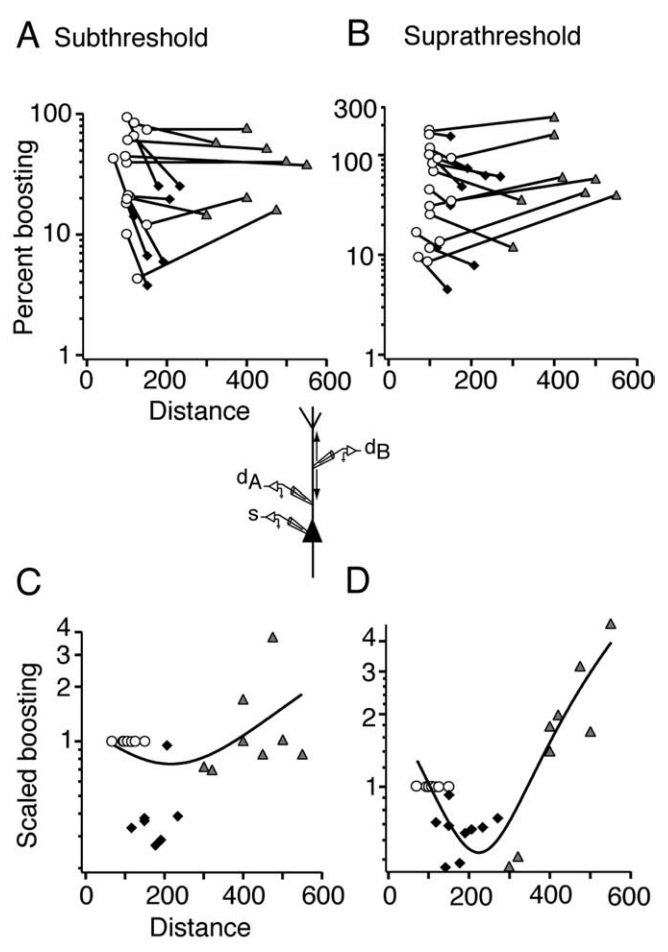Abstract
The firing evoked by injection of simulated barrages of EPSCs into the proximal dendrite of layer 5 pyramidal neurons is greater than when comparable inputs are injected into the soma. This boosting is mediated by dendritic Na+ conductances. However, the presence of other active conductances in the dendrites, some of which are nonuniformly distributed, suggests that the degree of boosting may differ along the somatodendritic axis. Here, we injected EPSC barrages at the soma and at the proximal, middle, and distal segments of the apical dendrite and measured boosting of subthreshold and suprathreshold responses. We found that although boosting was maintained throughout the apical dendrite, the degree of boosting changed nonmonotonically with distance from the soma. Boosting dipped in the middle dendritic segments as a result of the deactivation of the hyperpolarization-activated cation current, Ih, but increased in the distal dendrites as a result of the activation of Ca2+ conductances. In the distal dendrites, EPSC barrages evoked repetitive bursts of action potentials, and the bursting pattern changed systematically with the magnitude of the input barrages. The quantitative changes in boosting along the somatodendritic axis suggest that inputs from different classes of presynaptic cells are weighted differently, depending on the location of the synaptic contacts. Moreover, the tight coupling between burst characteristics and stimulus parameters indicate that the distal dendrites can support a coding scheme that is different from that at sites closer to the soma, consistent with the notion of a separate dendritic integration site.
